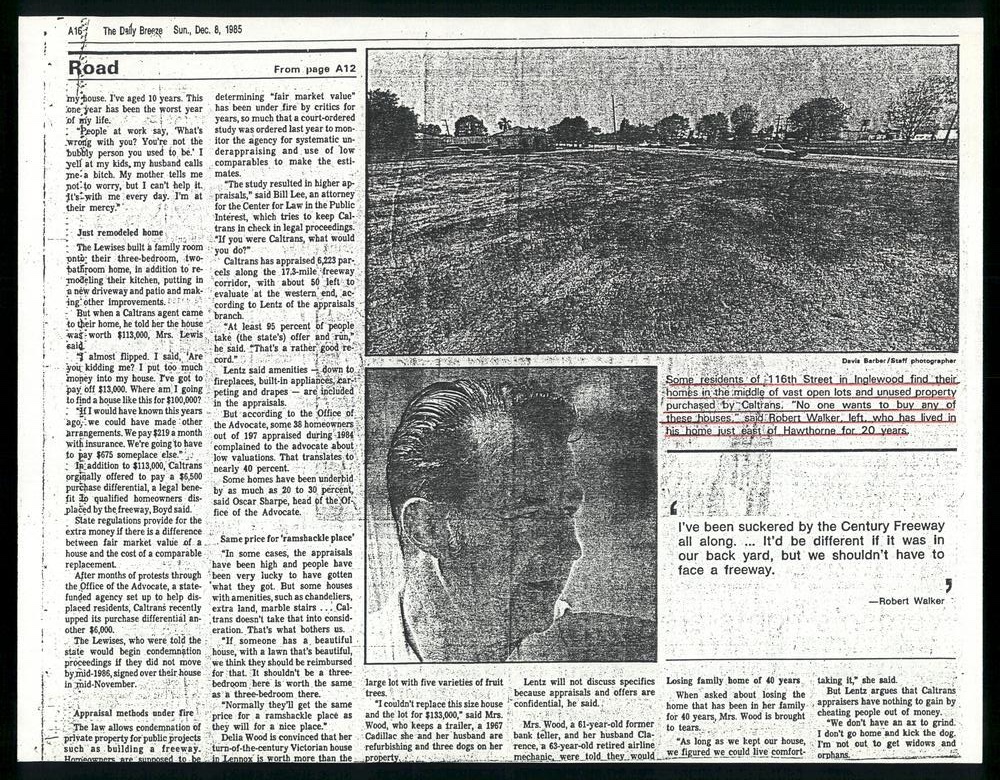Conclusion: "The Last Freeway"
Conclusion: "The Last Freeway"
The cost of the Century Freeway, at $127 million per mile, far exceeded previous highway projects. However, it also catalyzed the development of thousands of units of new affordable housing along its route, providing opportunities for those affected by the freeway's construction and beyond.Century Freeway Opening Ceremony
At the time of Century Freeway’s opening, costing more per mile than any other road in America, the Century Freeway was regarded by some as not merely a transportation but a feat of social engineering. Judge Pregerson’s Federal consent decree required the allocation of billions towards social programs, including new housing for the 25,500 displaced individuals, job training initiatives for minorities and women, tutoring and scholarships for underprivileged children, and even housing for AIDs patients in West Hollywood, ten miles away from the freeway’s path.[1]
The legacy of the Century Freeway extends beyond its physical structure. While new freeway projects have become increasingly improbable in Los Angeles, the city has embraced public transit, as evidenced by the Blue Line and subsequent subway lines. Moreover, the social programs initiated by the consent decree, including Century Housing, have left a lasting positive impact. Century Housing, once a temporary entity, has evolved into a major provider of affordable housing, exemplifying the enduring legacy of balancing infrastructure development with social responsibility.[2]
Related Documents











[1] [Opening New Freeway, Los Angeles Ends Era \(Published 1993\)](https://www.nytimes.com/1993/10/14/us/opening-new-freeway-los-angeles-ends-era.html)
[2] https://longreads.com/2015/03/23/the-last-freeway-2/
[2] https://longreads.com/2015/03/23/the-last-freeway-2/